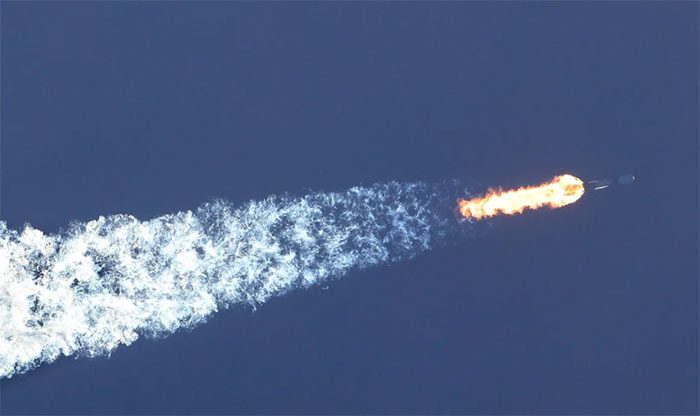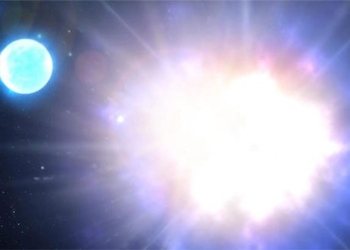The European Space Agency (ESA) has announced that scientists are working to melt a layer of ice that is increasingly thickening, obscuring the view of the Euclid space telescope – dubbed the “dark universe detective.”

The Falcon 9 rocket carrying the Euclid telescope satellite launched from Cape Canaveral Space Station, Florida, USA, on July 1, 2023. (Photo: AFP/TTXVN)
This is the latest technical issue among many that the telescope has encountered since its launch into space last July, with a mission to map one-third of the sky.
ESA hopes that Euclid will help further explore the nature of dark matter and dark energy – two components believed to make up about 95% of the universe but remain a mystery.
According to Ralf Kohley, the scientist overseeing the operations of the equipment on Euclid, during a check in November, the ground team first noticed a slight decrease in the amount of light entering the telescope’s visible light sensor.
After analyzing the data, they believe the issue lies with a thin layer of ice – measuring only the size of a DNA strand – accumulating on the telescope’s optical surface.
Kohley acknowledged that this is a significant problem, but remains confident that Euclid can still fulfill its mission with the help of scientists.
Preventing water intrusion is a common issue for all spacecraft. In the frigid environment of space, water molecules freeze on the first surface they contact, and in this case, some water molecules may have adhered to Euclid’s mirror.
Immediately after the telescope was launched, scientists used internal heating elements to warm everything on the lens, hoping to eliminate any potential water accumulation.
Currently, scientists are considering doing this again. However, Kohley stated that heating the entire device would significantly disrupt the mission.
Kohley indicated that it would take at least a month to bring the telescope back to sky survey operations.
This is not Euclid’s first incident. Previous cosmic rays had disturbed the telescope’s precise guidance sensor, requiring scientists to update the software.
Euclid officially began its survey operations last month. The first images from the telescope, released in November 2023, showcased a colorful cluster of galaxies in the distant universe.





















































